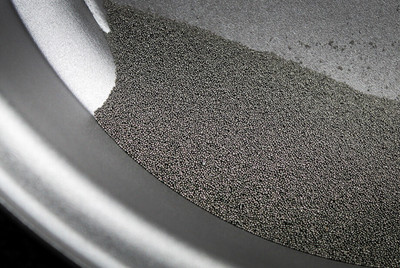24th Jul 2024
Pneumatic paint sprayers have revolutionised the painting industry, offering a faster, smoother, and more efficient way to apply paint to various surfaces. In this blog, we'll explore how they operate, what makes them efficient, and why they've become a go-to choice for many painting projects.
What is a pneumatic paint sprayer, and how does it work?
A pneumatic paint sprayer is a paint sprayer which uses compressed air to break down paint into tiny particles, in other words it’s just another name for airless/air-assisted paint sprayers. The main components of a pneumatic paint sprayer include a compressor connection, pump and housing, suction hose, reg set, paint hose, and spray gun. The air compressor supplies the compressed air needed to move the paint to the spray gun. The spray gun atomises the paint, and the hoses connect all the components, delivering the paint to the spray gun. The pressurised air flow creates a mist of paint particles and is then sprayed out, dependant on low or high pressures, through the nozzle – onto the prepared surface, resulting in the desired smooth finish. The pressure is controlled through the reg set to achieve the desired result.
Why should you use a pneumatic paint sprayer?
- Can cover large surfaces quickly, reducing the time needed for painting compared to brushes or rollers.
- Produces a fine mist of paint that results in a smooth, high-quality finish.
- Provides a consistent coat of paint, minimising the chances of streaks or brush marks.
- Versatile application to surfaces.
- Many pneumatic sprayers offer adjustable pressure and spray patterns, allowing for greater control over the application.
What is the difference between HVLP (High Volume Low Pressure) and conventional pneumatic paint sprayers?
The primary difference between HVLP (High Volume Low Pressure) and conventional pneumatic paint sprayers lies in their operational mechanics and applications. Here’s a detailed comparison:
| Operation | Advantages | Disadvantages | |
| HVLP Sprayers | HVLP sprayers use a high volume of air delivered at low pressure. The lower pressure results in finer atomisation of the paint, producing a softer, more controlled spray pattern. |
|
|
| Pneumatic Paint Sprayers |
|
|
|
Choosing between HVLP and conventional pneumatic paint sprayers depends on the specific needs of your project, including the type of finish required, the size of the area to be painted, and the type of paint or coating being used.
How do I set up and use a pneumatic paint sprayer for the first time?
Before you begin to operate the paint sprayer, you should wear the correct PPE, consisting of a respirator mask, safety glasses, suit and gloves. These will keep you clean and protect you from inhaling dangerous fumes and particulates. You must ensure have good ventilation, especially if working indoors. Ideally you should cover floors and furniture with drop cloths or plastic sheeting to protect them from overspray.
Clean the surface to remove any unwanted debris. Sand the surface if necessary to ensure proper paint adhesion and apply a primer if required for your project. Mix the paint thoroughly, and thin it if necessary.
Attach the spray gun to the air hose. Connect the air hose to the air compressor. Ensure all connections are secure to prevent air leaks. Set the air pressure on the compressor and adjust the fluid and air controls on the spray gun to achieve the desired spray pattern. Before spraying the actual surface, test the spray pattern on a piece of cardboard or scrap material. Adjust the nozzle and spray gun settings as needed to achieve an even, consistent spray. Hold the spray gun perpendicular to the surface, and move the gun in smooth, overlapping strokes to avoid streaks and ensure even coverage. Keep the gun moving to prevent paint buildup and runs.
After completing the painting, clean the spray gun and all associated equipment thoroughly. Disassemble the spray gun and clean all parts with the appropriate cleaner. Rinse the hoses and other components to remove any residual paint.
You should always regularly inspect the equipment for any signs of air or paint leaks and address them immediately. By following these steps and precautions, you can set up and use a pneumatic paint sprayer effectively and safely, achieving a professional-quality finish for your painting projects.
What are the top models of pneumatic paint sprayers on the market?
At Airblast Eurospray, we are pleased to be able to offer premium paint spraying equipment from Airlessco and WIWA, available to purchase straight away, with fast UK delivery and a local Click and Collect Service. Click here to go directly to our website and see our online range.
Our engineers also have years of experience in the service and maintenance of painting equipment. Our facilities are fully equipped for servicing and testing, and we are an authorised repair centre for fluid handling equipment. Our engineers are also able to carry out service work on your premises where required. To book your equipment in or to receive a quote, call +44 (0) 1778 560 650 and ask for Gavin Murray, or email enquiries@airblast.co.uk.




